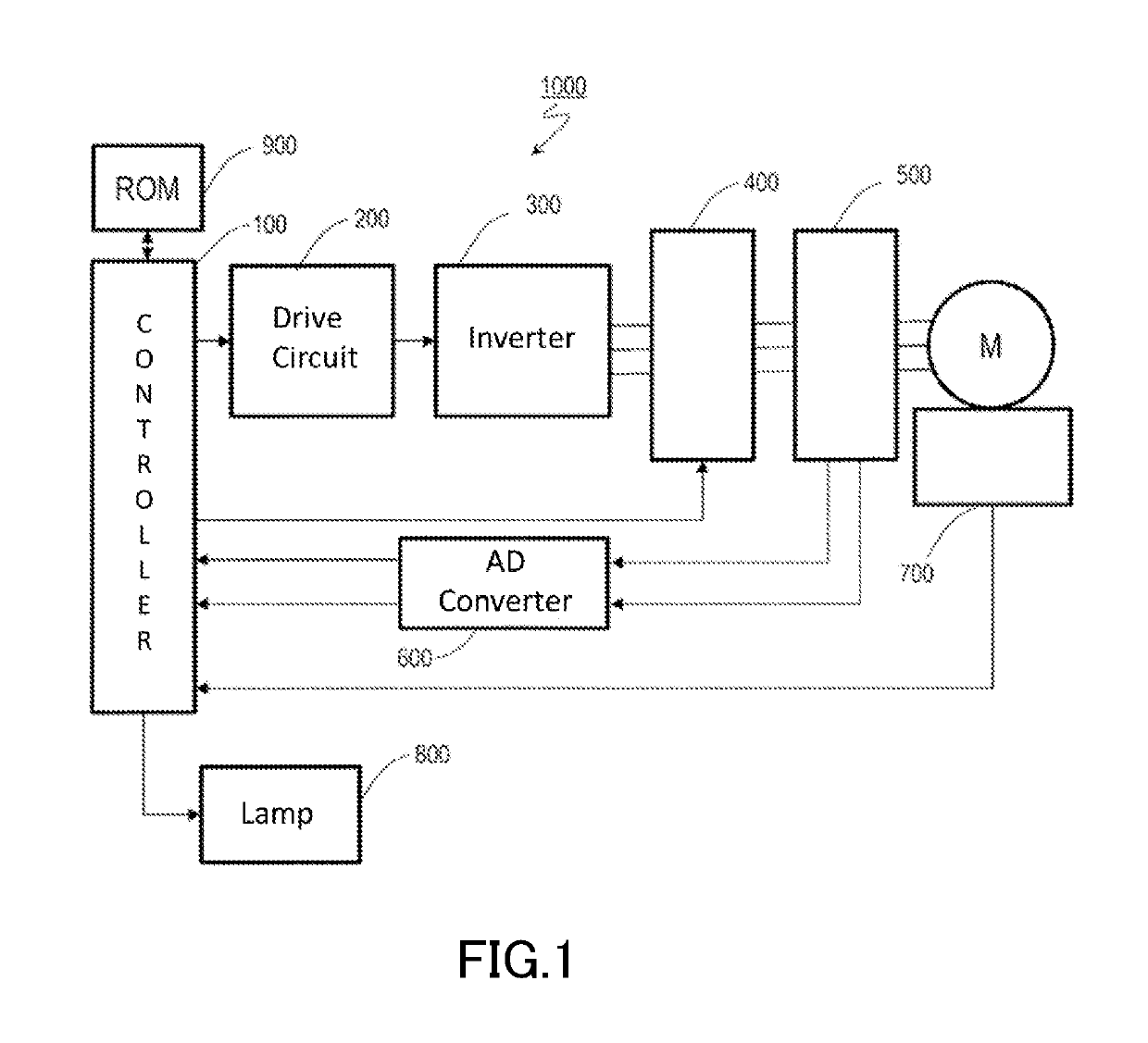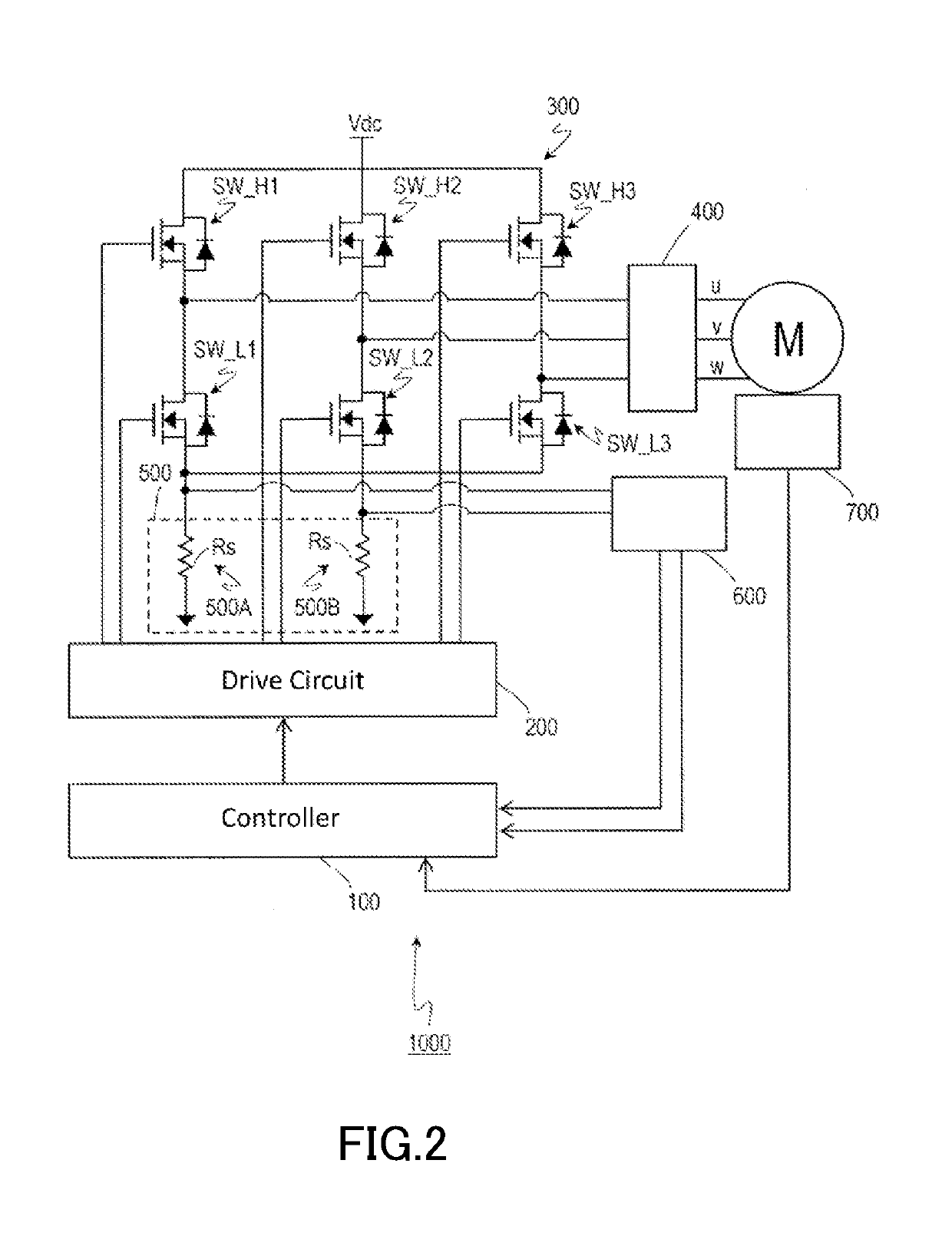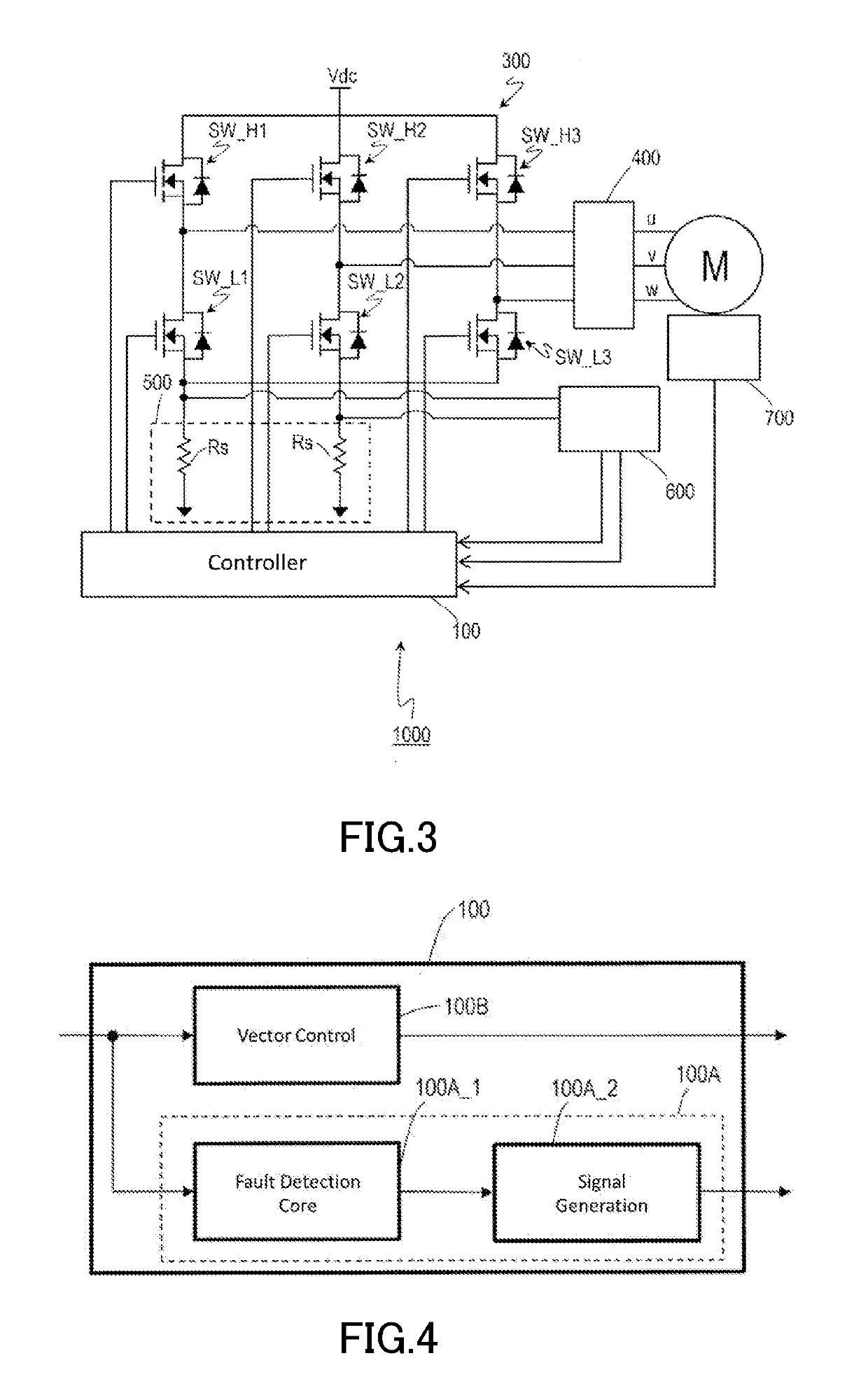Sensor fault detection method, motor drive system, and electric power steering system
- Summary
- Abstract
- Description
- Claims
- Application Information
AI Technical Summary
Benefits of technology
Problems solved by technology
Method used
Image
Examples
first embodiment
[0042]FIG. 1 schematically illustrates hardware blocks of a motor drive system 1000 employing sensor fault detection according to a
[0043]The motor drive system 1000 typically includes a motor M, a controller 100, a drive circuit 200, an inverter (also referred to as an “inverter circuit”) 300, a shutdown circuit 400, a plurality of current sensors 500, an analog-to-digital conversion circuit (hereinafter, referred to as an “AD converter”) 600, an angle sensor 700, a lamp 800, and a read only memory (ROM) 900. For example, the motor drive system 1000 may be designed in modules as a power pack, and may be manufactured and sold in the form of a motor module including a motor, a sensor, a driver, and a controller. It should be noted herein that the motor drive system 1000 will be described as an exemplary system including as its constituent the motor M. Alternatively, the motor drive system 1000 may be a system excluding as its constituent the motor M, the system being configured to dri...
second embodiment
[0137]With reference to FIGS. 31 and 32, a description will be given of a method for detecting a sensor fault according to a
[0138]In the first embodiment, the counter electromotive force error Ver is represented by the function of the error between the estimated phase angle ρs and the measured phase angle ρ. Equation (6) described above is changed in accordance with a procedure to be described below, which makes it possible to understand the physical meaning of the counter electromotive force error Ver.
[0139]FIG. 31 illustrates a relationship between the composite magnetic flux Ψs and the estimated phase angle ρs.
[0140]First, Equation (8) is obtained by replacing p in Equation (6) with ρ′. In Equation (8), a relation of ρ′=90°−ρ is satisfied.
Ver=BEMFβ·cos ρ′−BEMFα·sin ρ′ Equation (8)
[0141]Equation (9) is obtained by dividing both the sides of Equation (8) by the absolute value BEMF.
Ver / BEMF=(BEMFβ / BEMF)·cos ρ′−(BEMFα / BEMF)·sin ρ′ Equation (9)
[0142]The composite magnetic flux Ψs is...
third embodiment
[0150]FIG. 33 schematically illustrates a typical configuration of an EPS system 2000 according to a
[0151]Typically, a vehicle such as an automobile is equipped with an EPS system. The EPS system 2000 according to the third embodiment includes a steering system 520, and an assist torque mechanism 540 that generates an assist torque. The EPS system 2000 generates an assist torque that assists a steering torque in a steering system, the steering torque being generated when a driver turns a steering wheel. The assist torque reduces a burden of a steering operation on the driver.
[0152]For example, the steering system 520 may include a steering wheel 521, a steering shaft 522, universal joints 523A and 523B, a rotating shaft 524, a rack and pinion mechanism 525, a rack shaft 526, left and right ball joints 552A and 552B, tie rods 527A and 527B, knuckles 528A and 528B, and left and right wheels 529A and 529B.
[0153]For example, the assist torque mechanism 540 includes a steering torque sen...
PUM
 Login to View More
Login to View More Abstract
Description
Claims
Application Information
 Login to View More
Login to View More - R&D
- Intellectual Property
- Life Sciences
- Materials
- Tech Scout
- Unparalleled Data Quality
- Higher Quality Content
- 60% Fewer Hallucinations
Browse by: Latest US Patents, China's latest patents, Technical Efficacy Thesaurus, Application Domain, Technology Topic, Popular Technical Reports.
© 2025 PatSnap. All rights reserved.Legal|Privacy policy|Modern Slavery Act Transparency Statement|Sitemap|About US| Contact US: help@patsnap.com



